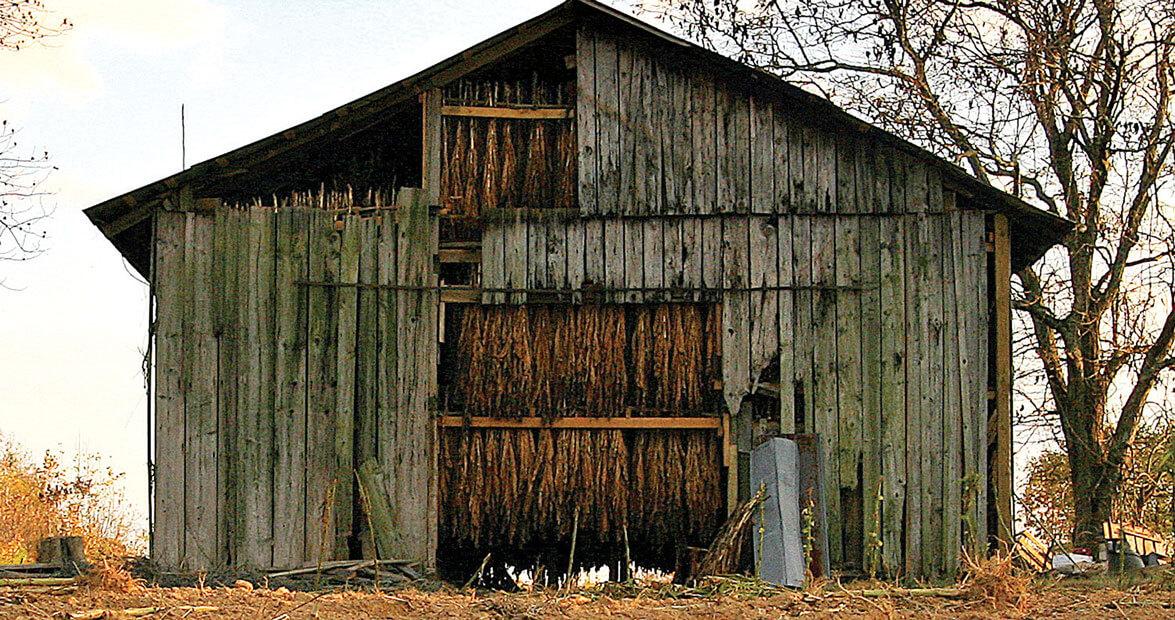North Carolina’s flue-cured tobacco barns are all but forgotten vernacular gems today, bygone symbols of a region’s history, culture and economy.
Once Native American introduced it to European colonists, tobacco quickly became a cash crop in Virginia, Maryland and Carolina. Europeans smoked the stuff daily for pleasure, making it a highly profitable export. It’s no coincidence that the crown molding ‘round the interior of Virginia’s legislative houses is sculpted in a motif of tobacco leaves.
But the primitive structures for curing tobacco were very different. Built in the traditional form of log houses, 16th-century tobacco barns were 14 feet square, 20 feet tall buildings built from hand-hewn logs. Under a gable roof were four “rooms” of rafters made for hanging tobacco.
Grown in dark soil and cured by open wood fire, North Carolina tobacco originally had a naturally harsh and rich flavor not widely favored by Europeans. Then in 1839, a slave in Caswell County nearly allowed a wood fire to die out. Rushing to rekindle it, he threw charcoal over the embers, raising the heat upward of 200 degrees. The accidental result: bright yellow leaves and a smooth, mild tobacco.
After that, a brick furnace and metal flue-cure system was constructed to better regulate the high temperature required to attain the flavorful “bright leaf.”
“I’ve always felt that the form of flue-cure tobacco barns evolved in large measure out of the need for thermal efficiency to cure the maximum amount of tobacco with the least amount of fuel,” says Michael Southern, senior architectural historian in the North Carolina State Historic Preservation Office.
Throughout the state, tobacco barn size and interior design varied little, but in the late 1800s, taller barns with frame construction were built in the coastal and southern plains. Roofs were adapted to accommodate large overhangs, or “sheds,” providing shade for farmers in the harsh southern climate.
“They were more scientific,” Southern says. “They had the advantage of generations of experimentation in finding the ideal balance between volume, fuel and labor requirements, and construction costs.”
Modern bulk curing has made the traditional flue-cure barn obsolete. Today there are fewer than 15,000 barns in the state, down from over 300,000 during the flue-curing peak. “Historic preservation exists on the mantra of adaptive use,” he says. “Barns don’t lend themselves to adaptive use without major renovations.”
“There’s a certain attitude against preserving the history due to tobacco and health problems,” he says. “When people realize there are only two barns left in the state, then they’ll want to preserve them. Rarity increases value.”
And as their usefulness of the past five centuries evaporates today, a question about the Carolina tobacco barn still lingers: What becomes of form when there is no function to follow?
– With Cheryl Wilder
For more, go here.
[slideshow id=241]


